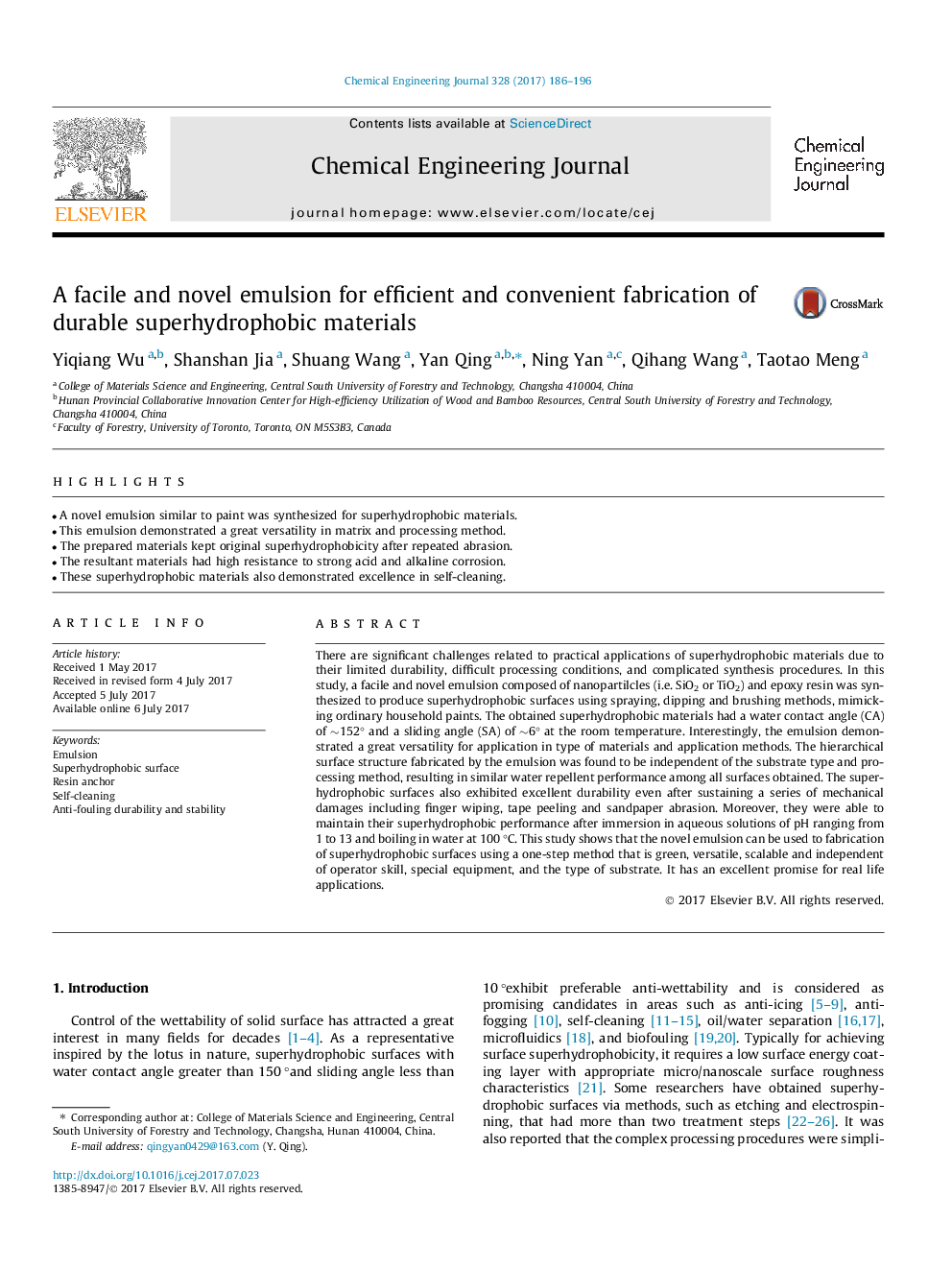| Article ID | Journal | Published Year | Pages | File Type |
|---|---|---|---|---|
| 6465349 | Chemical Engineering Journal | 2017 | 11 Pages |
â¢A novel emulsion similar to paint was synthesized for superhydrophobic materials.â¢This emulsion demonstrated a great versatility in matrix and processing method.â¢The prepared materials kept original superhydrophobicity after repeated abrasion.â¢The resultant materials had high resistance to strong acid and alkaline corrosion.â¢These superhydrophobic materials also demonstrated excellence in self-cleaning.
There are significant challenges related to practical applications of superhydrophobic materials due to their limited durability, difficult processing conditions, and complicated synthesis procedures. In this study, a facile and novel emulsion composed of nanopartilcles (i.e. SiO2 or TiO2) and epoxy resin was synthesized to produce superhydrophobic surfaces using spraying, dipping and brushing methods, mimicking ordinary household paints. The obtained superhydrophobic materials had a water contact angle (CA) of â¼152° and a sliding angle (SA) of â¼6° at the room temperature. Interestingly, the emulsion demonstrated a great versatility for application in type of materials and application methods. The hierarchical surface structure fabricated by the emulsion was found to be independent of the substrate type and processing method, resulting in similar water repellent performance among all surfaces obtained. The superhydrophobic surfaces also exhibited excellent durability even after sustaining a series of mechanical damages including finger wiping, tape peeling and sandpaper abrasion. Moreover, they were able to maintain their superhydrophobic performance after immersion in aqueous solutions of pH ranging from 1 to 13 and boiling in water at 100 °C. This study shows that the novel emulsion can be used to fabrication of superhydrophobic surfaces using a one-step method that is green, versatile, scalable and independent of operator skill, special equipment, and the type of substrate. It has an excellent promise for real life applications.
